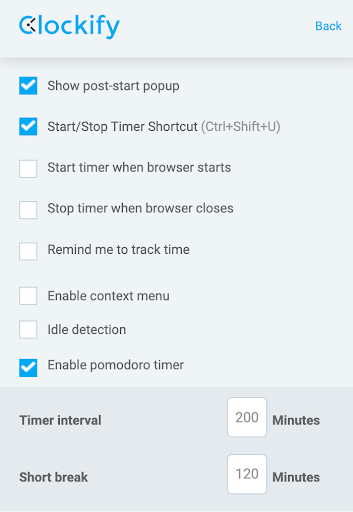Do you have trouble focusing on what’s important? Do you struggle to stay on track as far as your daily tasks are concerned? If that’s the case, Benjamin Franklin might have a solution for you.
Apart from the fact that he was one of the Founding Fathers, Benjamin Franklin could be thought of as the forefather of to-do list apps.
But, knowing how much Franklin managed to do during his lifetime, I guess you might be troubled by one question at this point:
Since Franklin had the same 24 hours each day to do his tasks, how did he accomplish so much more than his contemporaries?
Well, he developed a schedule of his own that he religiously adhered to! And today, his schedule is widely known as Benjamin Franklin’s daily schedule.
For the purpose of figuring out whether Benjamin Franklin’s schedule could really enhance our productivity levels too, I decided to test it out and follow it for a week.
So now, after a week of going about my day following the famous politician’s daily routine, I’m about to present to you with the whole process and its outcomes in detail. You will also get an insight into a more contemporary adaptation of Benjamin Franklin’s schedule which can serve as an inspiration for making your own version.
Here’s what you’ll find out if you continue to read this blog post:
- A few words about Benjamin Franklin’s life,
- What his daily schedule looked like,
- Why I decided to try his daily schedule,
- What my Benjamin Franklin schedule adaptation looks like,
- The pros and cons of Benjamin Franklin’s daily schedule, and
- My overall rating of Franklin’s daily schedule.
So, let’s start by mentioning a few things about his life.

Table of Contents
A few words about Benjamin Franklin’s life
Benjamin Franklin was a scientist, inventor, politician, businessman, and philanthropist. He was the only one of the Founding Fathers to sign the Declaration of Independence, and his well-known kite experiment proved that lightning is indeed electricity in 1752.
Benjamin Franklin accomplished a great deal during his 84 years on Earth. In his lifetime he:
- Created the lightning rod,
- Contributed to physics and population studies,
- Wrote a significant number of books,
- Composed music, and much more.
On April 17, 1790, in Philadelphia, Franklin passed away. He was 84 years old.
But, let’s rewind for a bit and mention that during his life, Benjamin Franklin also developed a strict schedule that he would religiously comply with later on in his life. Let’s see what his typical daily routine looked like.
What is Benjamin Franklin’s daily schedule?
Benjamin Franklin’s schedule was based on a quite simple, yet well-structured daily routine. He divided his days into 6 time blocks, and each time block was meant for specific activities.
As you will see from his daily schedule, Benjamin Franklin was an early bird who would start his days with optimism and self-encouragement at the crack of dawn. By following Franklin’s schedule, procrastination days are a thing of the past!
Here’s what Benjamin Franklin’s personal daily schedule consisting of 6 time blocks looked like:
5 a.m.–8 a.m. — “Rise, wash, and address Powerful Goodness! Contrive days’ business, and take the resolution of the day; prosecute the present study, and breakfast.
8 a.m.–12 p.m. — Work.
12 p.m.–2 p.m. — Read, or overlook my accounts and dine.
2 p.m.–6 p.m. — Work.
6 p.m.–10 p.m. — Put things in their places. Supper. Music or diversion, or conversation. Examination of the day.
10 p.m.–5 a.m. — Sleep.”
As you can see, Franklin was a creature of habits.
He would get up at 5 a.m. and spend his first time block taking care of his hygiene, having breakfast, and peacefully planning the rest of the day. The most productive time was during his 2 four-hour time blocks, where he would engage in deep work.
At the same time, he was well aware of the importance of taking regular breaks, so he would devote two of his time blocks to reading, lunching, listening to music, and deep thinking. Once he was completely done with his work for the day, he would tidy up his workspace.
He would devote his last block of time to dining, chatting with friends and family, and reflecting back on his day. This helped him be aware of his accomplishments throughout the day. At 10 p.m. sharp, he would go to bed and sleep until 5 a.m. the next morning.
Why did I decide to try Benjamin Franklin’s daily schedule?
In addition to being a productivity researcher and writer, I’ve always liked making to-do lists and sticking to daily routines. I also appreciate the outcomes of a planned day and having a system in place for both my personal and professional life.
What’s more, it turned out that most of the individuals I’ve respected over the years, both famous and not, take planning seriously (or at least used to).
So, it was only logical that after reading a book about the daily rituals of famous people and trying out the daily routines of several writers (Maya Angelou and Charles Dickens among others), it was time to live a few days like another person I admire — Benjamin Franklin.
Due to the accomplishments he made throughout his lifetime, I was intrigued to find out the secret to his productivity — how did he accomplish so much throughout his life, given the fact that he had the same 24 hours as we do?
And I have to admit that my life turned into a mess at one point, with a toddler and a new job from home, not to mention all the household chores. Therefore, I decided to try living for a few days adhering to Franklin’s schedule.
What did my Benjamin-Franklin daily schedule look like and how did it go?
As I decided to follow Franklin’s schedule, I still had to make certain changes. Since I am a work-from-home mum, I had to make room for some other activities aside from reading, eating, relaxing, and working (which roughly described a typical day in Franklin’s life).
Therefore, I included some typical mom jobs in the schedule such as doing laundry, preparing meals, spending time with my family, etc.
For this purpose, I made my own Benjamin Franklin based schedule in a Google Sheets template.
This is what my schedule looked like:

🕔 5 to 8 a.m.
I have to be honest — at first, I found the idea of getting out of bed at 5 a.m. overwhelming. However, on second thought, I found this to be a perfect opportunity to have some quiet time for myself and drink my morning coffee in peace, without all the family members in the room. What’s more, there is something liberating about being alone with your thoughts and being able to plan out your day in peace.
Waking up early gave me enough time to:
- Take a refreshing morning shower,
- Make a healthy breakfast (not just a quick one, like chocolate cereal or stuff), and
- Create thorough to-do lists.
💡 Clockify Pro Tip
You can make to-do lists hassle-free by using numerous Clockify’s free to-do list templates:
It was hard at first, but I can confidently say that my newly-formed morning routine positively affected my productivity, and I (hopefully) formed a life-long and life-improving habit of getting up early.
🕗 8 a.m. to noon
Next, it was time to get down to business. Since I work from home, I always start my work at 8 a.m., so I was no stranger to starting my work that early.
As you can see from Franklin’s schedule, he worked 4 hours before taking a break. My working habits, on the other hand, usually include working one hour, then taking a five-minute break.
So, adopting the routine of working four consecutive hours was a bit challenging, I must admit.
The first day of following Franklin’s schedule was tough since my concentration levels started to drop after only two hours of work. I decided to call it a day and start all over the next day.
That same night, it occurred to me that I recently read a book about one productivity method called “Eat that frog”. It basically talks about how you should complete your most difficult tasks first and then deal with easier and less important tasks.
Therefore, on the second day of my experiment, I decided to dedicate the first 4-hour time block to doing the most complicated tasks first, like writing an outline for my paper or conducting an initial topic research.
Prioritizing my work and dedicating the first block of work to doing the most demanding tasks first turned out to be beneficial for my productivity. Also, science backs me up here too — there is evidence that people who put off doing difficult tasks face a great deal of stress that negatively affects their productivity.
Nevertheless, for me personally, working for four hours straight without taking any breaks sounded a bit frightening at first. But, what really helped me endure those four hours of constant work was dividing my workload and doing the most challenging tasks first.
💡 Clockify Pro Tip
Do you have trouble prioritizing your daily tasks? Learn more about The Pickle Jar method for time management and work prioritization:
🕛 Noon to 2 p.m.
Benjamin Franklin had the habit of devoting his first break to reading.
I didn’t have time for reading like Franklin since I decided to devote this time block to doing household chores, but I did manage to get enough rest for another 4-hour work period, too.
There are many benefits of taking breaks while working, that’s for sure, but taking a two-hour break seemed a bit too much for me. It happened that I lost my focus for a bit, and I got caught up in a let-me-do-just-one-more-thing whirlpool.
To help me stay on track with the schedule and get back to work on time, I decided to try tracking the time I spent on breaks by using a Pomodoro timer.
Even though the whole concept of the Pomodoro technique is based on working 25-minute intervals and taking 5-minute breaks after, I decided to customize it to my needs.
Therefore, I created a 2-hour break interval, and the timer was supposed to notify me each time my break was over.

At noon sharp, I hit the START button, and the countdown began.
Ultimately, using a timer turned out to be quite handy as it served as a stopwatch, measuring the time I spent on a break. The app helped me track those two hours, and I managed to get back to my second work block in no time.
🕑 2 to 6 p.m.
Time to go on with my work.
That 2-hour break, even though a bit long for my taste, was surprisingly refreshing. Since I finished my most demanding tasks during the first work block, all I needed to do now was tackle all the small and non-urgent tasks, such as editing my previous work or attending meetings.
At this point, I couldn’t help but notice how this method really helped me divide my workload in a smart and stress-free way.
🕕 6 to 10 p.m.
My evening routine wasn’t much different from Franklin’s. For me, putting things back in their place, as Franklin suggested, meant tidying up around the living room and kitchen. I also managed to make dinner, played with my toddler, and even read a book after that.
Finally, it was time to reflect back on my day and ask myself if I had done anything good.
Although I don’t practice meditating, asking myself this question felt like some sort of meditation. It helped me relax and wind down before bedtime, and only later did I realize why — reflecting on your day improves your sleep quality, or at least that’s what psychologists say.
🕙 10 p.m. to 5 a.m.
“Early to bed and early to rise makes a man healthy, wealthy, and wise” was one of Benjamin Franklin’s most well-known sayings.
Franklin had a very strict routine when it came to his sleeping schedule — he would sleep seven hours per night, wake up at 5 in the morning, and go to bed at 10 at night. Studies suggest that the regularity of our sleep routine counts more than the time we go to sleep or wake up. So, since a consistent sleep schedule can help our brains fall asleep faster, it’s only logical that Benjamin Franklin’s clockwork sleep routine had something to do with his daily accomplishments.
Since I’m a mum of a toddler, going to bed at 10 wasn’t much of a problem. We always start our bedtime routine at 8 p.m., so this task came naturally to me.
The pros of Benjamin Franklin’s daily schedule
In essence, having a fixed daily schedule that you are going to stick to can help you better manage your time and make the most of your day.
Besides, there are many benefits to following Benjamin Franklin’s daily schedule and adopting his daily routine. Franklin’s daily schedule allows you to:
- Focus on your work,
- Allocate your time and workload efficiently,
- Have quality time for yourself later in the day, and
- Develop a healthy work-life balance.
Franklin schedule’s power lies in its simplicity. It is straightforward, effective, and easy to implement (once you get used to waking up at dawn).
The cons of Benjamin Franklin’s daily schedule
No schedule is perfect, and that’s why I would like to draw your attention to some potential downsides of Benjamin Franklin’s schedule:
- It might be demanding to follow this schedule since it may look a bit rigid at first glance.
- Franklin’s approach may not be suitable for everyone — some people may need more flexibility in their schedules. For example, I didn’t find his 2-hour breaks appealing since I’m used to taking several shorter breaks and one thirty-minute break.
- Some people may find it difficult to complete all of the tasks on their to-do list in a single day. This could be the case because not everybody possesses the same level of discipline or motivation as Franklin did to stick to a daily routine.
💡 Clockify Pro Tip
Sometimes keeping a to-do list may seem overwhelming, especially if you get frustrated in case you don’t cross off everything on that list. That’s why you might try and keep a to-don’t list. Learn more about how to do just that:
My overall rating of Benjamin Franklin’s daily schedule
Adjusting to Benjamin Franklin’s daily schedule took me some time, but it was well worth the effort.
These are some of the new habits I created that changed my life for the better, as well as helped me improve my productivity:
- Waking up early in the morning,
- Prioritizing my work,
- Tidying up my workspace, and
- Keeping a consistent sleeping schedule.
In essence, I stuck to the simplicity of Benjamin Franklin’s daily schedule and quickly got used to it.
It’s incredible how fast you develop a habit of getting out of bed early in the morning and performing a morning routine that gives you an energy boost at the very start of the day.
Still, after trying Franklin’s schedule, I must admit that I find working shorter periods of work and taking shorter breaks more appealing.
On the other hand, I must be impartial, and I have to take into account the fact that I only devoted a week to adapting to this schedule. After all, it takes more than that before new behavior and habits get formed. In fact, some research says it takes between 18 and 254 days before new habits are developed. So keep that factor in mind before you try this schedule, too.
All things considered, out of 5 stars, my overall rating is 4 well-deserved stars to Benjamin Franklin’s daily schedule!
FINAL RATING: ⭐⭐⭐⭐
Use Clockify to make the most of your day
Emulating the daily schedules of influential historical figures can only get you so far.
Instead, use time tracking software like Clockify to arrange your daily activities and keep track of where your time went.
Wonder how to do that?
At the end of a hard day’s work, sit down at your computer and check what you’ve been up to with the Dashboard feature in Clockify. There, you’ll see the following:
- Names and details of projects and tasks,
- The time during which you were most productive,
- Completion rates per project,
- The money you earned,
- Breaks you took up, and much more.
Here’s one neat example of a Dashboard in Clockify:

With in-depth reporting like this, Benjamin Franklin’s got nothing on you. In fact, he probably would have used digital reports of daily activities himself if he hadn’t lived 300 years ago.
Become as organized and tidy as ever.


